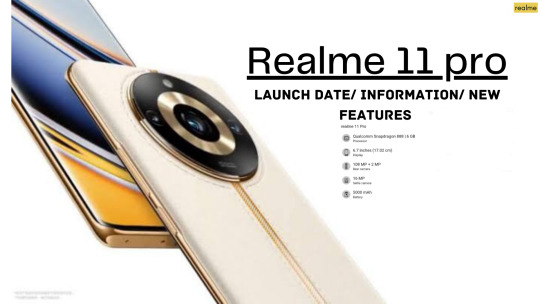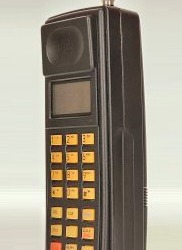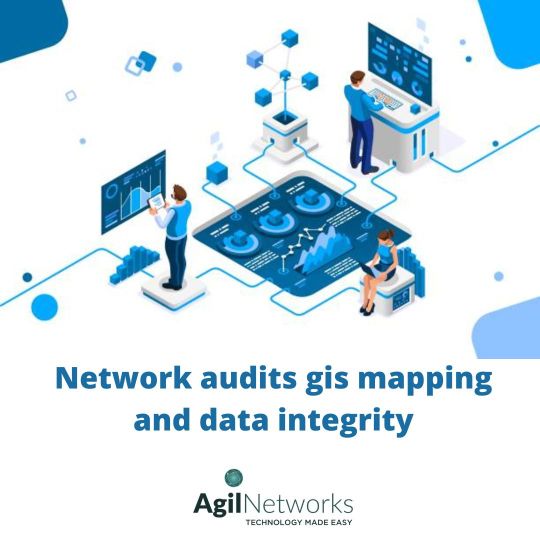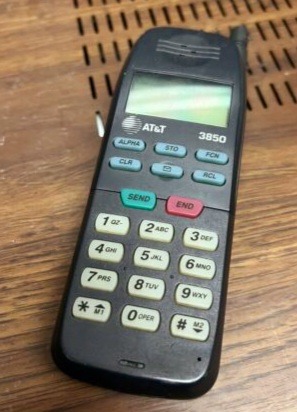#Mobile telecommunications
Text
Realme 11pro & 11pro+ Features.
😘😍
https://tinyurl.com/2pkxd3un
👆👆

Realme, the popular smartphone brand, has been teasing the launch of its upcoming Realme 11 series, which is set to arrive in May. The new lineup will include three models: Realme 11, 11 Pro, and 11 Pro+. The company has already confirmed that the phones will come with a curved-edge display, which has got fans excited about what else to expect. Here’s what we know so far.
#google news#fitness#fanfic#facts#football#film#france#isro#fashion#food#technology#realme#mobile#mobile telecommunications
1 note
·
View note
Link

1 note
·
View note
Text
While most telecom networks bury their cables 60cm (about 2ft) underground, PalTel buries its cables up to 8 metres (26ft) deep. In case the Israelis cut off electricity, its data centres in Gaza also have three layers of redundancy: generators, solar panels and batteries.
The company has also developed emergency protocols to direct workers remotely from the occupied West Bank, and if severed communications make this impossible, Gazan staff are empowered to act autonomously.
Despite all the redundancies and preparations, the sheer scale of bombings these past weeks has still crippled the network. About 70 percent of the mobile network has been taken offline. Solar panels have been rendered mostly useless either by being destroyed in attacks or covered in dust and debris.
The relentless nature of the conflict is also weighing on staff, who are dogged by danger from their house to the field.
Rabih*, a fibre optics technician, was called to repair a cable just metres from the border on October 15. Prior to going, he had to give an exhaustive list of the repair team’s names, the colour of their cars and registration numbers to the Israelis, because “a mistake could be deadly”.
As Rabih and his team laboured for two hours to fix the cable, the buzz of a drone above him and the sounds of shelling intermingled with the sound of their excavator.
“Any wrong move could mean being targeted. I cannot explain to my wife and kids why I do that or why I volunteer to go out during the war. My company doesn’t oblige me, but if someone can do it, it has to be me,” he said.
No matter how many metres deep they dig or the number of solar panels they install, Gaza’s connections to the outside world ultimately relies on the Israelis.
The cables that connect Gaza to the outside world run through Israel, and the country on at least two occasions has deliberately cut off the strip’s international communications.
“It’s clear for us that it was cut off by a decision. What proves this is that we didn’t do anything to get it back,” Melhem said.
Israel also controls fuel to Gaza, allowing a small trickle into Gaza on Friday after weeks of pressure from the United States.
Described as a “drop in the bucket” by humanitarian groups, Israel announced that 120,000 litres (31,700 gallons) of fuel would be allowed into the territory every two days for use by hospitals, bakeries and other essential services.
PalTel will also be given 20,000 litres (5,283 gallons) of fuel every two days for its generators.
On Thursday, the company had announced it would go into a full telecoms blackout because its fuel reserves were exhausted for the first time during the current war.
According to Mamoon Fares, the corporate support director at PalTel, the 20,000 litres provided “should be enough to operate a good part of the network”.
However, Gaza’s telecoms network will still be at the mercy of Israel should it decide to cut off fuel deliveries or network services that run through its territory.
Without the ability to communicate, the already dismal situation in Gaza would only further deteriorate.
“No ambulances, no emergency services, no civil defence or humanitarian organisations can work without telecommunications,” Melhem said.
* Names have been changed to protect the individuals’ safety.
29 notes
·
View notes
Text






🇰🇷 Step back in time to the mid-1980s when Samsung embarked on its journey into the world of mobile phones with the creation of the Samsung SC-1000—a pioneering device designed for in-car use. While this marked Samsung's inaugural foray into the realm of mobile communication, the SC-1000 faced challenges due to quality issues, hindering its success.
📱 Undeterred by setbacks, Samsung's dedication to innovation led to a pivotal moment in 1988 with the launch of the Samsung SH-100—the company's first handheld mobile phone. Born out of two years of intensive research and development, the SH-100 not only marked Samsung's entry into the handheld mobile phone market but also represented South Korea's first venture into mobile phone manufacturing.
⚜️ Released just in time for the 1988 Summer Olympics, the Samsung SH-100 debuted on the domestic market, setting the stage for Samsung's future endeavors in the mobile industry. By comparison, Nokia, a prominent player in the market, had only introduced three cell phone models by that time.
📈 Despite modest initial sales of only 1000 to 2000 units, the Samsung SH-100 laid the foundation for Samsung's continued growth and innovation in the mobile phone sector. Undeterred by early challenges, Samsung remained committed to advancing its cell phone technology, releasing new and improved models year after year.
🌐 The journey of Samsung's mobile phone evolution serves as a testament to the company's resilience, determination, and unwavering pursuit of excellence in the ever-evolving landscape of telecommunications. From humble beginnings to global prominence, Samsung's legacy in the mobile industry continues to shape the way we communicate and connect with the world.
#techtime chronicles#old technology#tech#technology#companies#old tech#information technology#technews#corporations#electronics#samsung#samsung electronics#south korea#made in south korea#sc-1000#sh-100#mobile phones#cell phone#telecommunications#telecomindustry#innovative#innovation#industry#cellular#phones#phone#communication#brands#technogeek#techno geeks
8 notes
·
View notes
Text
#privacy#invasion of privacy#mobile phones#apple music#apple news#apple#telecommunications#sim card#sim#communication#morals#ethics#technews#technology#infotech#information technology#ausgov#politas#auspol#tasgov#taspol#australia#fuck neoliberals#neoliberal capitalism#anthony albanese#albanese government#class war#capitalism#eat the rich#eat the fucking rich
8 notes
·
View notes
Text
File: The Wyoming Incident
SCP#: AEJ
Code Name: The Wyoming Incident
Object Class: Neutralized
Special Containment Procedures: SCP-AEJ has not been reported since its manifestation. Furthermore, those responsible were apprehended but eventually died as a result of the incident. As such, the chances of it happening again and low, but just to be safe, the Telecommunications Monitoring Office - Internet Division and Broadcast Division are to alert Foundation administrative staff in the event of SCP-AEJ or something similar happening again.
Description: SCP-AEJ was an incident where several TV stations were hacked by cyber terrorists determined to cause chaos for laughs. However, what they displayed was not disgusting or disturbing imagery, though it did appear as such, but in reality, was much worse. It's unknown exactly how, but the hackers were able to obtain rejected memetic images created by Group of Interest: PENTAGRAM.
For those that don't know, PENTAGRAM is a division of the United States Department of Defense. While the FBI: UIU was created to investigate anomalous threats within the US, PENTAGRAN was made specifically to combat anomalous threats to the ALL of the US. It has been approved of existence by the SCP Foundation and is funded by the Global Occult Coalition. Unfortunately, PENTAGRAM is not as protected as either organization and thus, was how this situation happened.
The hackers obtained the memetics which were rejected because they failed to do as PENTAGRAM wanted. Instead of proper brainwashing or memory wipe; they often causing seizers, headaches, stroke, nausea, and other forms of mental deterioration. These symptoms easily got worse as time went on often leading to their bodies flying in the air while they entered a comatose state, their eyes glowing in a blinding light, their skin suddenly rotting out of nowhere, or their heads just bloating until they explode. It should be noted that anomalous symptoms are always a risk with exposure to multiple memetics in a short period of time. It's for this reason why memetic training and therapy, though effective, is considered dangerous as it can overload the brain and damage it beyond repair.
SCP-AEJ was discovered in 2006 within [data expunged], [data expunged], [data expunged], and a few other cities, all of which are in Wyoming. The event nearly led to an MK Class Broken Masquerade Scenario had the Foundation not reacted in time.
Mobile Task Force Dionysus-1 "Fake News" was entrusted to feed the media a story of a sudden outbreak of a new pathogen within the state of Wyoming. Afterwards Mobile Task Force Gamma-5 "Red Herrings" was deployed to distribute amnestics to anyone who wasn't affected but witness the incident. Meanwhile Foundation agents and MTF units disguised as CDC agents found those who were affected and used amnestic treatment on those that could be saved and quarantined the rest. The hackers involved in the incident suffered the same fate as those who saw the broadcasting of the amnestics. They were used as test subjects to see how to properly subside and even reverse the effects before actual treatment was taken to the affected public. This action was approved by the Ethics Committee, "A fitting punishment" in their own words.
The cover story worked with the public believing those that could be saved were cured and those that were mutated were killed by the plague. The incident was unfortunately known forever in history as "The Wyoming Ghost Plague" or as "The Wyoming Incident". Though the Foundation can take pride in knowing that no civilian will ever know the true nature of the SCP-AEJ incident.
Side Note: PENTAGRAM vouched to the ACPA council to take responsibility for the SCP-AEJ incident. However, the ACPA did not listen with Foundation representatives even claiming, "a lesser organization cannot be expected to handle such consequences". Just words but considered quite the insult to those in the anomalous world that desire to protect the interests and innocence of the public.
.
SCP: Horror Movie Files Hub
#DZtheNerd#SCP: Horror Movie Files#SCP: HMF#SCP Foundation#SCP Fanfiction#SCP AU#SCP#Telecommunications Monitoring Office#PENTAGRAM#Mobile Task Force Dionysus-1 “Fake News”#Mobile Task Force Gamma-5 “Red Herrings”#SCP-AEJ#Neutralized#The Wyoming Incident#creepypasta#Internet Horror#Writing Horror#SCP GoI#SCP Group of Interest#SCP Groups of Interest
5 notes
·
View notes
Text
Why mmWave hasn't become the mainstream spectrum of 5G?
In a previous article of IPLOOK, we introduced what 5G mmWave (5G mmWave) is. Due to its wide bandwidth, abundant resources, and high frequency characteristics, 5G mmWave has significant advantages and was once considered a key frequency band for development in the early stages of 5G. However, today, although many countries and regions around the world have promoted or deployed 5G mmWave, the application of mmWave technology in the industry still faces uncertainties and challenges.
At the beginning of 2023, due to various factors, the construction progress of 5G mmWave base stations in South Korea was far behind expectations, with completion rates only ranging from 10.6% to 12.5%. In Japan, NTT DOCOMO and Rakuten Mobile experienced no growth in mmWave users, and their traffic share was relatively low. Even in the US, which began deploying 5G mmWave ahead of other countries in 2019, the availability of 5G mmWave networks is less than 1%.
Many people believe that the reason why 5G mmWave has not become the mainstream spectrum for 5G is because of its own characteristics and the unclear application demands:
Limited Range: leading to high cost
The mmWave has a small coverage radius, and the construction and operation costs for the same coverage area are high, which hinders large-scale deployment. As a result of its high frequency and large transmission loss, the mmWave has poor coverage ability, with a coverage radius of only about 150 meters for a single mmWave base station, which is only 1/5 of the coverage radius of low-frequency bands such as Sub-6. If a continuous coverage 5G mmWave network is to be built like in the 3.5GHz frequency band, the number of base stations needed would be more than twenty times greater than that of regular 5G base stations, leading to high construction costs.
Poor Penetration: resulting in poor user experience
5G mmWave has poor penetration capability and severe diffuse attenuation, resulting in poor user experience and customer dissatisfaction. There are two main reasons for this. First, the mmWave has a short wavelength (between 1-10 mm), making it poorly penetrating, as it can be blocked by leaves and water droplets. Second, the mmWave is sensitive to the surface of objects, easily causing signal energy to dissipate in multiple directions, resulting in poor signal reception at the receiving end and affecting user experience. For example, even though over 20,000 mmWave base stations have been built in Japan, customers are reluctant to pay for mmWave services due to prominent problems such as frequent signal interruptions and insufficient coverage during usage.
Lack of Groundbreaking Apps
Low-frequency mmWave has clear bandwidth advantages, but due to the lack of groundbreaking applications, its value is difficult to fully unleash in the short term. Globally, mid-to-low frequency spectrum resources are gradually becoming scarce, and more reliance is placed on spectrum re-farming and frequency coordination to solve this issue. In contrast, 5G mmWave, with its continuous and wide spectrum resources, can better achieve bandwidth capacity enhancement. However, by reason of the unclear promotion of large-scale applications such as XR and Smart Homes, and traditional video services can be satisfied with existing bandwidth, the short-term demand for mmWave is not significant.
3 notes
·
View notes
Text
There's been talk about shutting down GSM network (e.g. Sweden and Norway have decided to do so by 2025) and I'm not too happy about it because it means that a lot of feature phones will become unusable. Okay, there are some new feature phones using 4G but for example mine, which is form 2006, will stop working if G2 gets taken down. Quite frankly, it makes me uneasy if my country also decides to close GSM because I don't want to switch to another phone... I like these old ones better!
For more info on the situation of 2G networks, see this website
#technological development can go fuck itself#i'm serious#gsm#2G#mobile network#phones#mobile phones#feature phones#basic phones#telecommunications#information technology#technology
1 note
·
View note
Text
Are EMF’s safe? (come, child, ruin your night)
y’all ready for this?
I’m not anti-5G, btw
turn your wifi off before bed and maybe stop keepin’ ya phone so close all the time
But like... why, though?
I've had my suspicions about cell towers being hazardous to health for a few years now and felt convinced enough to not bother researchin' it for confirmation. Now that I'm blah blah blah, I decided to actually bother. Since it got kinda heavy, I had to ask myself if I should put in hella more effort creatin' a damn research report of sorts for y'all asses present the info for others like it's a damn PSA. And my conscious won. T~T
But like... what, though?
A base station (aka: cell phone tower) is that shit you see everywhere but never notice. It's usually tall af and has panel antennas on it. It's "used for the transmission and reception of the radio signals between the mobile phones and the network." The problem with 'em is the electromagnetic field (EMF) their equipment can give off... for half a mile. 😐
In short, they've been found to cause health problems. Like cancer. 🤷🏿♂️
Fun fact, panel antennas can be installed on the roof/side of buildings that may be directly across the street from someone's workplace... with the antenna at their elevation. 🤷🏿♀️
Real Quick
For those who don’t trust EMF-Portal, it (sometimes) has links to the study/article.
Full-text PDF can be requested directly from the authors on ResearchGate.net’s article for the study.
Full-text PDF can (usually) be found online in English and German with the right search.
5 Studies
V/m = volts per meter
7191 cancer deaths were selected according to the above mentioned criterias out of a total of 22,493 cancer deaths. The most significant causes were lung cancer (19.6 %), stomach cancer (14.1 %), prostate cancer (12.6 %), and breast cancer (11.5 %). The mean electric field intensity of the measurements in 2008 was 7.32 V/m, varying from 0.4 to 12.4 V/m.
At a distance of up to 100 m [328.08 ft], the absolute number of deaths was 3569, (49.6 % of all deaths), the mortality rate was 43.4 persons per 10,000 [0.43%] and the relative risk was 1.35 in relation to the mortality rate of 32.1 per 10,000 [0.32%] inhabitants of the entire Belo Horizonte municipality [in Minas Gerais, Brazil]. A mortality rate of 34.8 per 10,000 [0.35%] inhabitants was observed for the residents living within 500 m [1,640.42 ft] of the base stations; this rate decreased for residents living farther from the base stations.
—Mortality by neoplasia and cellular telephone base stations in the Belo Horizonte municipality, Minas Gerais state, Brazil; Science of The Total Environment (2011); EMF-Portal
ResearchGate.net’s article


The result of the study [of 967 permanent residents] shows that the proportion of newly developing cancer cases was significantly higher among those [320] patients who had lived during the past ten years at a distance of up to 400 metres [1,312.34 ft] from the cellular transmitter site, which has been in operation since 1993, compared to those patients living further away, and that the patients fell ill on average 8 years earlier. In the years 1999-2004, ie after five years' operation of the transmitting installation, the relative risk of getting cancer had trebled for the residents of the area in the proximity of the installation compared to the inhabitants of Naila[,Germany,] outside the area.
—The Influence of Being Physically Near to a Cell Phone Transmission Mast on the Incidence of Cancer (original title: ‘Einfluss der räumlichen Nähe von Mobilfunksendeanlagen auf die Krebsinzidenz’); Umwelt · Medizin · Gesellschaft (2004); ResearchGate.net
EMF-Portal

9 cancer cases were observed in the first period 2000 - 2004 and 14 cases in the period 2005 - June 2007 among [1,283] residents living within a radius of 400 m [1,312.34 ft] to a mobile phone base station [in Germany (Hennen, suburb of Iserlohn, Westfalia)]. The mean age of disease onset was 59.2 years in the first period and 59.3 years in the second period in comparison to the expected value of 66.4 years evaluated from the Saarland Cancer Registry. The authors concluded, that a statistically significant increase of cancer incidence was observed 5 years after the base station has been started operating.
—[Incidence of cancer adjacent to a mobile telephone basis station in Westfalia] (original title: Krebsinzidenz von Anwohnern im Umkreis einer Mobilfunksendeanlage in Westfalen - Interview-basierte Piloterhebung und Risikoschätzung); Umwelt · Medizin · Gesellschaft (2009); EMF-Portal
Area A: ≤ 350 m / 1148.3 ft from base station
Area B: > 350 m / 1148.3 ft from base station
Of the 622 people of area A, 8 cases of different kinds of cancer were diagnosed in a period of one year (from July 1997 - June 1998). The cancer incidence rate was 129 cases per 10,000 [1.29%] persons per year in area A compared to 16/10,000 [0.16%] in area B and 31/10,000 [0.31%] in the town of Netanya [in Israel]. Relative cancer rates for females were 10.5 for area A, 0.6 for area B and 1 for Netanya.
The authors conclude that the study indicates an association between increased incidence of cancer and living in proximity to a mobile phone base station.
—Increased incidence of cancer near a cell-phone transmitter station; International Journal of Cancer Prevention (2004); EMF-Portal
ResearchGate.net

Took forever to get this damn infographic just right. >.>
A long-term study was conducted in Germany to investigate the influence of a mobile phone base station on neurotransmitters under true-to-life conditions.
µW/m² = microWatts per square meter
24 out of 60 participants were exposed to a power density of < 60 µW/m², 20 participants to 60 - 100 µW/m², and 16 participants to more than 100 µW/m² .
The values of the stress hormones adrenaline and noradrenaline grew significantly during the first 6 months after starting the GSM base station; the values of the precursor substance dopamine substantially decreased in this time period. The initial condition was not restored even after 1.5 years. Due to the not regulable chronic difficulties of the stress balance, the phenylethylamine levels dropped until the end of the investigation period. The effects show a dose-effect relationship and are situated far under the valid limit values.
—[Modification of clinically important neurotransmitters under the influence of modulated high-frequency fields - A long-term study under true-to-life conditions] (original title: Veränderung klinisch bedeutsamer Neurotransmitter unter dem Einfluss modulierter hochfrequenter Felder - Eine Langzeiterhebung unter lebensnahen Bedingungen); Umwelt · Medizin · Gesellschaft (2011); EMF-Portal
ResearchGate.net’s German article
EMF:data page (German)
While I did find 17 different figures for it, I’mma save myself the bother of describin’ dat noise and not include ‘em thanks~.
But what does the FCC say?
FCC.gov’s conclusion seems to be that they’re generally safe for civilian life as long as you don’t get close and aren’t directly in front of the antenna’s trajectory (don’t climb a fuckin’ tower or enter those rooms/buildings). A very “it’s fine” set of conclusions tbh. Hella contrasted by other sources.
Nonetheless… below is the index...
FCC’s RF Safety FAQ Index:
What is "radiofrequency" and microwave radiation?
What is non-ionizing radiation?
How is radiofrequency energy used?
How is radiofrequency radiation measured?
What biological effects can be caused by RF energy?
Can people be exposed to levels of radiofrequency radiation and microwaves that could be harmful?
Can radiofrequency radiation cause cancer?
What research is being done on RF biological effects?
What levels are safe for exposure to RF energy?
Why has the FCC adopted guidelines for RF exposure?
How safe are mobile phones? Can they cause cancer?
How can I obtain the specific absorption rate (SAR) value for my mobile phone?
Do "hands-free" ear pieces for mobile phones reduce exposure to RF emissions? What about mobile phone accessories that claim to shield the head from RF radiation?
Can mobile phones be used safely in hospitals and near medical telemetry equipment?
Are wireless and PCS towers and antennas safe?
Are cellular and other radio towers located near homes or schools safe for residents and students?
Are emissions from radio and television antennas safe?
How safe are radio antennas used for paging and "two-way" communications? What about "push-to-talk" radios such as "walkie-talkies?"
How safe are microwave and satellite antennas?
Are RF emissions from amateur radio stations harmful?
What is the FCC's policy on radiofrequency warning signs? For example, when should signs be posted, where should they be located and what should they say?
Can implanted electronic cardiac pacemakers be affected by nearby RF devices such as microwave ovens or cellular telephones?
Does the FCC regulate exposure to radiation from microwave ovens, television sets and computer monitors?
Does the FCC routinely monitor radiofrequency radiation from antennas?
Does the FCC maintain a database that includes information on the location and technical parameters of all the towers and antennas it regulates?
Which other federal agencies have responsibilities related to potential RF health effects?
Can local and state governmental bodies establish limits for RF exposure?
Where can I obtain more information on potential health effects of radiofrequency energy?
The Government Accountability Office (GAO) prepared a [2012] report of its investigation into safety concerns related to mobile phones. The report concluded that further research is needed to confirm whether mobile phones are completely safe for the user, and the report recommended that the FDA take the lead in monitoring the latest research results.
Professional Opinion...
Safe Distance from Cell Towers…
It is also difficult to predict a safe distance from cell towers. For example, cell towers are designed to transmit most of their radio frequency (RF) energy horizontally. Some areas below the tower may have lower levels than locations farther away that are more in line with the vertical height of the antennas.
The exposure from a cell tower will depend on the type of antennas, the number of antennas, how much the antennas are actually being used, the time of day, etc. The distance needed to reduce exposures down to the General Public Precautionary Level of 100 microwatts per meter squared (μW/m²) is often around a quarter of a mile (1320 feet) or more. Due to the uncertainty, on-site testing with a broadband RF test meter is strongly recommended.
A German study reported that people living within 400 meters (1312 feet) of cell towers had over 3 times the normal rate for new cancers (City of Naila 2004). In an Israeli study, the relative risk for cancer was about 4 times greater within 350 meters (1148 feet) of the cell tower (Wolf et al. 1997). Based on findings like these, a minimum safety distance of 1/4 mile (1320 feet) might be considered prudent.
(...)
The suggestions for safety distances in this chart are generally based on Michael Neuert’s [engineer, licensed electrician, and health educator] professional on-site testing of the various EMF sources in the San Francisco Bay Area since 1992.
—What Distance is Safe? By Michael R Neuert, MA, BSME, ©2023
helpful table if you want all that info: What EMF Level is Safe? By Michael R Neuert, MA, BSME, ©2023
i know what i said
Based on the accumulated evidence, we recommend that IARC [the International Agency for Research on Cancer] re-evaluate its 2011 classification of the human carcinogenicity of RFR [radio-frequency radiation], and that WHO [the World Health Organization] complete a systematic review of multiple other health effects such as sperm damage. In the interim, current knowledge provides justification for governments, public health authorities, and physicians/allied health professionals to warn the population that having a cell phone next to the body is harmful, and to support measures to reduce all exposures to RFR.
—Risks to Health and Well-Being From Radio-Frequency Radiation Emitted by Cell Phones and Other Wireless Devices; Front Public Health (2019 Aug 13); NCBI
Lookup (or pull out) your cellphone’s manual and search for the sections on “radio frequency exposure” and “Specific Absorption Rate (SAR) information” to see how close the phone can safely be kept near your body… and that it should be kept away from “the bellies of pregnant women and for teenagers, away from the lower abdomen.” 😐
For an informative giggle, here’s the “Harmful Cell Phones” segment from season 7 of The Colbert Report.
#research#long post#scientific study#telecommunications#telephone base stations#mobile phone base stations#cell towers#cell sites#transmission masts#basis stations#panel antennas#EMF#wifi#cell phones#radiation#cancer#ResearchGate#FCC#RF Safety#radio-frequency radiation#IARC#World Health Organization#physical health#mental health#EMF-Portal#nothin' to see here people#just another day(s) of my life wasted#move along#pretty sure i saw a lone panel antenna relatively low af on a street light pole once
1 note
·
View note
Text
Enjoy streaming your studies unlimitedly. Get the Best sim card in Australia for students.
Students who focus to explore new learning pathways should be alerted enough for the best availability of their network connection. All routines were re-ordered as of now due to post-pandemic practices. All networks and connection requirements changed unexpectedly. Online classes and courses are at their peak during this scenario.
Recent trends show that choosing the online platform for studies is becoming the increased count status. This is due to the pandemic situation. During post-pandemic also everyone is still in the same comfort zone as in previous scenarios.

While considering the connection requirements, a stable network is required which should be fast and reliable enough. At this point, the thing to consider as a student is the best SIM card availability. Telecom industries changed their pool of strategies as the requirement for connection is vastly changing. Quality services providing is the factor to count during the purchase. You should figure out certain factors to priorities before considering your purchase of SIM and plans.
Strengthening network signals in different areas are the goal considered by the Telecoms. You should choose your best from available ones based on student perspectives. In the Australian Telecom market among the different competitors, the TELSTRA stands out as the first and most trusted network provider. You can choose Telsim, the best mobile phone plans providers in Australia. Telsim is an MVNO that uses part of Telstra’s mobile network.
Telsim has the most affordable and interesting plan packages. Data provided by the plans are detailed along with all the credits and different features. Plans are mainly simple and flexible. No lock-in contracts and data banking benefits are the feathers in the crown of Telsim.
To know more about the best SIM cards available in Australia.
#australia#telecommunications#mobile#mobileplans#bestsimcards#dataplans#bestprepaidmobileplans#prepaidsim
2 notes
·
View notes
Text

”Donate to the Fairy Shrine today! So that you too may be able to speak with your best friends from really, really far away!"
#dash commentary#fairiesofgensokyo#goddess of telecommunications#i hope i spelled that right#quick thing while on mobile
3 notes
·
View notes
Photo

Network Audits Gis Mapping and Data Integrity - AgilNetworks
#network audits gis mapping and data integrity#network audits gis mapping and data integrity united states#network audits caribbean region#network audits gis mapping and data integrity latin America#cja telecommunications latin America#network audits gis mapping and data integrity America#network audits gis mapping and data integrity usa#turnkey network construction and management south Africa#consulting services for telecommunications industry#network construction and management florida#turnkey network construction and management#turnkey network construction and management united states#turnkey network construction and management caribbean region#mobilized construction teams caribbean region#mobilized constructions services caribbean region#turnkey construction project management caribbean region#turnkey in construction caribbean region#turnkey network construction and management region#turnkey network construction and management in America#turnkey network construction and management America#agilnetworks#turnkey network construction and management latin America#turnkey network construction and management south America#turnkey network construction and management usa#network audits Caribbean
2 notes
·
View notes
Text
#mobiletower#telecommunication#largestnetwork#mobiletower tower power work indus#mobilenetwork#mobiletower tower mobile#installation#network#mobile
0 notes
Text
Understanding MNOs and MVNOs in the Telecom Industry | HugeCount
The telecommunications sector is pivotal in enabling seamless global communication. The mobile virtual network operator emerges as a crucial entity within this vibrant arena, significantly shaping the industry’s trajectory. So, this exploration provides a nuanced look at the differences, hurdles, and collaborative dynamics between Mobile Network Operators (MNOs) and MVNOs. It aims to shed light on their influence over consumer preferences, technological progress, and the competitive telecommunications sector. The Fundamental Divide The difference between these communication providers in network infrastructure ownership is at its core. MNOs own the physical network infrastructure, including antennas, base stations, and the crucial spectrum licenses […]
Source: https://hugecount.com/tech/understanding-mnos-and-mvnos-in-the-telecom-industry/
0 notes
Text







🇺🇸 Step back in time and delve into the fascinating history of AT&T's journey in the development and production of mobile phones! The AT&T Corporation (an abbreviation of its former name, the American Telephone and Telegraph Company) was a successor of the original Bell Telephone Company founded by the legendary inventor of the first practical telephone - Alexander Graham Bell in 1877.
👉 AT&T's division - Bell Laboratories, was created in 1925 from the consolidation of the R&D organizations of Western Electric and AT&T. Bell Labs made significant scientific advances, including the transistor, the laser, the solar cell, the digital signal processor chip, the Unix operating system, and the cellular concept of mobile telephone service.
🔍 AT&T's foray into the realm of mobile phones dates back to the early days of telecommunications. In the late 1940s, it embarked on pioneering efforts to develop mobile phone technology, laying the groundwork for future advancements in wireless communication.
💡 In the early years, AT&T, a huge telecommunications giant, focused on developing analog mobile phone systems, laying the groundwork for the future of wireless communication. Their first systems were limited to car phones, which required roughly 30 pounds of equipment in the trunk. These early devices were bulky and limited in functionality, but they represented a groundbreaking leap forward in telecommunications.
🏁 The first cellular phone was the culmination of efforts begun at AT&T Bell Labs and continued by Motorola Inc. While Motorola was developing the cellular phone itself, AT&T Bell Labs worked on the cellular system called AMPS. On April 3, 1973, Martin Cooper placed the first public call from a Motorola handheld portable cell phone to his counterpart Dr. Joel S. Engel at AT&T Bell Labs.
🏙 Advanced Mobile Phone System (AMPS) was an analog mobile phone system standard originally developed by AT&T Bell Labs and later modified in a cooperative effort with Motorola Inc. It was officially introduced in the USA on October 13, 1983. On this day, Bob Barnett, former president of Ameritech Mobile Communications, placed a call with a cell phone to the grandson of Alexander Graham Bell, who was in Germany for the event.
➡️ During the 1980s to 1990s, AT&T Corporation tried to achieve its place in the cell phone market and introduced some interesting devices: 3810, 3850, and 6650. Featuring sleek and ergonomic designs, they were a real testament to innovation and engineering excellence.
⚙️ Equipped with advanced features for its time, these phones boasted impressive functionality, including voice calling, text messaging, and address book capabilities. Their cutting-edge technology represented a leap forward in mobile communication, setting new standards for performance and reliability. These phones also ran on the AMPS 800 cell system.
📑 In 1996, AT&T spun off Bell Laboratories, along with most of its equipment manufacturing business, into a new company named Lucent Technologies. AT&T retained a small number of researchers who made up the staff of the newly created AT&T Labs. That meant the decline of future attempts at cell phone manufacturing by AT&T Corporation.
🌐 Today, AT&T continues to be a powerful multinational telecommunications holding company, offering a diverse range of cutting-edge services to consumers worldwide. With a rich legacy of innovation and a steadfast commitment to excellence, AT&T remains a leader in the ever-evolving landscape of telecommunications.
#old technology#techtime chronicles#companies#old tech#tech#technology#information technology#technews#corporations#electronics#at&t#bell labs#lucent#mobile phones#motorola inc#bell telephone company#american telephone and telegraph company#at&t corporation#cell phone#cell system#amps 800#alexander graham bell#car phone#telecomindustry#telephone#telecommunications#innovators#innovative#innovation#industry
4 notes
·
View notes
Text
hate this credit on mobile phone recharge bullshit after countless dollars I've given to this corrupt as fuck corporation... nazi telecommunication industry suck my cock you corrupt kkkunts!
#telstra#optus#vodaphone#telecommunications#telephone#mobile phones#eat the rich#ausgov#politas#auspol#tasgov#taspol#australia#fuck neoliberals#neoliberal capitalism#anthony albanese#albanese government#anti capitalism#anticapitalista#anti capitalist love notes#anticapitalistically#antinazi#antiauthoritarian#class war#eat the fucking rich#fuck the gop#hot as fuck#fuck the police#fuck the patriarchy#fuck the supreme court
2 notes
·
View notes